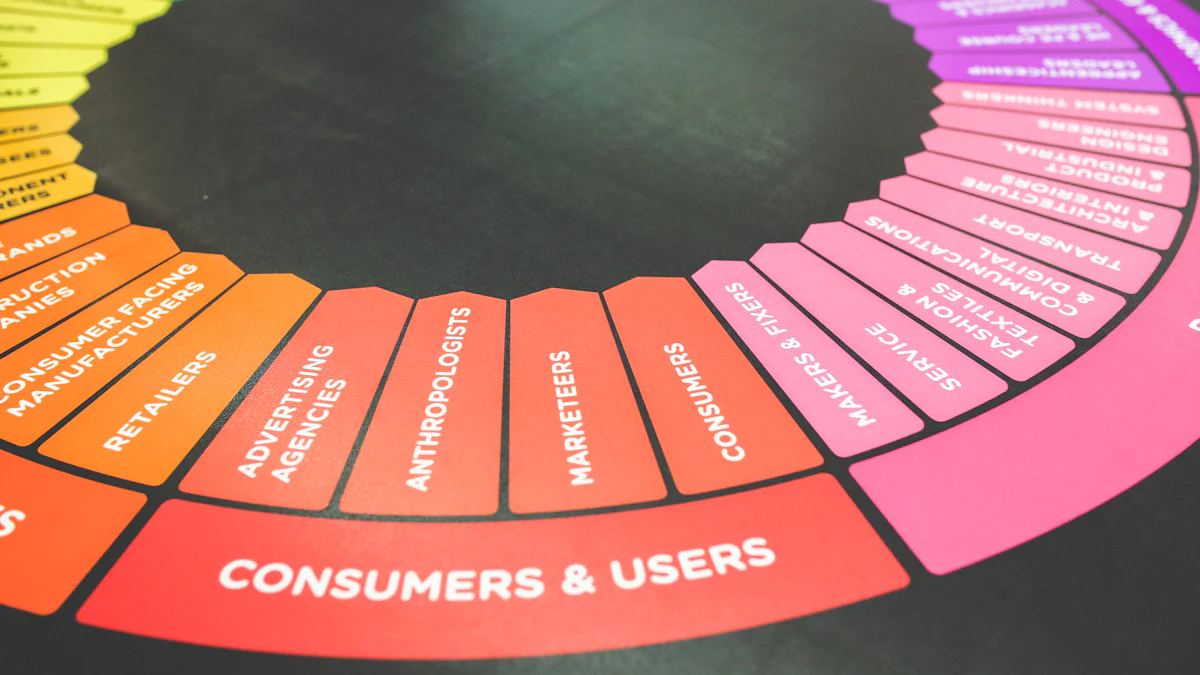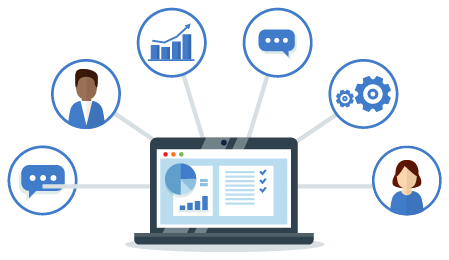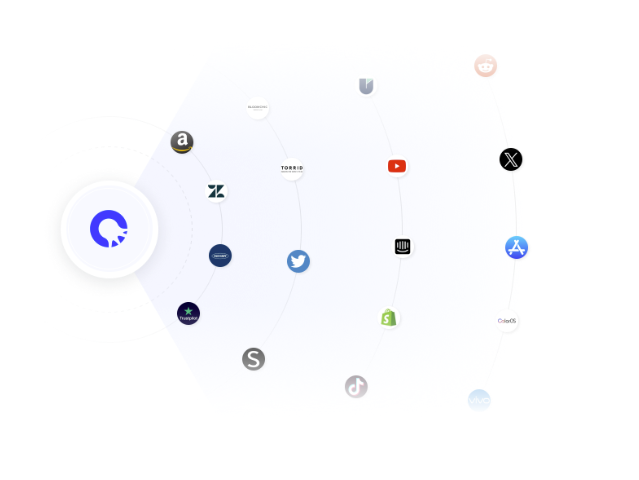
Image Source: pexels
Analyzing customer feedback is essential for driving business growth, and effective Customer Feedback Analytic plays a crucial role in this process. It helps you understand what your customers value most and where your business can improve. Studies show that 77% of customers view brands more favorably when they actively seek feedback. Additionally, businesses that enhance customer experiences based on feedback see a 2.6x increase in purchase likelihood.
Customer feedback analysis often leads to impactful changes. For example, a SaaS company improved its onboarding process after redesigning its interface, boosting completion rates by 30%. Similarly, an e-commerce retailer reduced cart abandonment by 25% by addressing checkout complaints. These examples highlight how structured Customer Feedback Analytic can uncover actionable insights, enabling you to make meaningful improvements.
Key Takeaways
- Collect feedback from different places like surveys, social media, and support. This helps you understand customer experiences better.
- Sort and group feedback by where it came from and its topic. This helps find patterns and focus on important problems.
- Use numbers and opinions to study feedback and find useful ideas. These ideas can help make customers happier.
- Turn feedback into actions by finding main problems and matching them with your business goals.
- Keep checking how changes based on feedback are working. This ensures things keep getting better and customers stay happy.
Gathering Customer Feedback

Effectively gathering feedback is the foundation of customer feedback analysis. By identifying the right sources, using advanced tools, and ensuring data quality, you can collect customer feedback that drives actionable insights.
Identifying Feedback Sources
To gather customer feedback, you need to explore diverse sources. These sources can be categorized as direct or indirect, private or public, and solicited or unsolicited. Each type offers unique insights into customer preferences and experiences.
Surveys and in-app questionnaires
Feedback surveys and in-app questionnaires are among the most structured ways to collect customer feedback. They allow you to ask specific questions tailored to your business needs. For example, a SaaS company might use post-onboarding surveys to measure user satisfaction with its interface. These tools provide direct and solicited feedback, making them ideal for identifying trends.
Social media platforms and online reviews
Social media platforms and online reviews offer a wealth of indirect and public feedback. Customers often share their experiences on platforms like Twitter or Yelp, providing real-time insights. For instance, an e-commerce retailer might monitor Instagram mentions to identify recurring complaints about delivery delays.
Customer support interactions and emails
Customer support interactions and emails are valuable sources of private feedback. These channels often reveal pain points customers face during their journey. For example, analyzing support tickets can help you uncover common issues, such as difficulties with product installation.
Using Tools for Feedback Collection
Advanced tools simplify the process of gathering feedback and ensure you capture meaningful data.
Customer feedback analytic tools
Modern tools offer features like omnichannel feedback collection, AI-powered insights, and advanced analytics. These capabilities help you centralize feedback from multiple sources and identify patterns efficiently.
CRM systems and integrations
Integrating feedback collection with CRM systems allows you to link customer feedback to individual profiles. This approach provides a holistic view of customer interactions, enabling personalized responses and better decision-making.
Ensuring Data Quality
High-quality data is essential for accurate customer feedback analysis. Following best practices ensures the feedback you collect is reliable and actionable.
Avoiding biased or incomplete data
Biased or incomplete data can lead to poor decisions. For example, relying solely on feedback from a few vocal customers might misrepresent the needs of your broader audience. To avoid this, ensure your feedback sources are diverse and representative.
Regularly updating feedback collection methods
Customer preferences evolve over time. Regularly updating your feedback surveys and collection methods ensures you stay aligned with their expectations. Pilot testing new survey designs and using a mix of question types can improve response rates and data quality.
By gathering feedback from varied sources, leveraging advanced tools, and maintaining data quality, you can lay a strong foundation for effective customer feedback analysis.
Organizing and Categorizing Feedback
Once you’ve gathered customer feedback, organizing it effectively is the next step. Proper organization helps you uncover trends, prioritize issues, and take meaningful action.
Segmenting Feedback by Source
Segmenting feedback by its source allows you to analyze data more efficiently. Grouping feedback from surveys, reviews, and social media ensures you address each channel’s unique insights.
Grouping feedback from surveys, reviews, and social media
When you group feedback by source, you can quickly identify and prioritize areas needing improvement. For example, feedback from surveys might highlight product-specific issues, while social media comments often reveal real-time customer sentiments. This segmentation improves customer service by enabling timely responses and fosters stronger customer relationships.
Using tags or labels for easy identification
Using tags or labels simplifies the process of sorting feedback. Assign tags like “delivery,” “pricing,” or “support” to categorize comments. This method makes it easier to locate specific feedback and track recurring issues over time.
Segmenting feedback by source not only reveals trends but also enhances customer loyalty by showing that you value their input.
Categorizing Feedback by Themes
Categorizing feedback by themes helps you identify common issues and focus on what matters most to your customers.
Identifying common themes like product quality or customer service
By categorizing feedback, you can pinpoint recurring themes such as “navigation issues” or “customer service delays.” This process clarifies user pain points and ensures your efforts target the most critical areas.
Using keyword analysis to detect recurring topics
Keyword analysis is a powerful tool for identifying recurring topics. Analyze commonly used words and phrases in customer feedback to uncover frequent issues. For instance, if “slow delivery” appears often, it signals a need to improve logistics. This approach also helps you understand customer sentiments and prioritize improvements.
Categorization is where raw data transforms into actionable insights, revealing patterns that guide your decisions.
Prioritizing Feedback
Not all feedback carries the same weight. Prioritizing high-impact issues ensures your efforts yield the greatest results.
Focusing on high-impact issues
Focus on feedback that addresses significant pain points. For example, product issues often have a high potential impact on customer retention. Use prioritization frameworks like Impact vs. Effort to decide which feedback to act on first.
| Feedback Theme | Importance Level | Potential Impact on Retention |
|---|---|---|
| Product Issues | High | Significant |
| Service Quality | High | Significant |
| Communication Issues | Medium | Moderate |
Using customer sentiment to guide prioritization
Customer sentiment analysis helps you gauge the emotional weight of feedback. Positive sentiments can highlight strengths, while negative ones point to areas needing immediate attention. Mapping feedback to the customer journey further refines your priorities by focusing on critical touchpoints.
By organizing and categorizing customer feedback, you create a clear roadmap for addressing customer needs. This structured approach ensures your customer feedback analysis leads to actionable insights and impactful changes.
Analyzing Customer Feedback
Analyzing feedback involves both qualitative and quantitative methods. Each approach provides unique insights into customer experiences, helping you make data-driven decisions.
Qualitative Analysis
Identifying patterns and trends in customer comments
Qualitative analysis focuses on descriptive data, such as customer comments, opinions, and suggestions. By reviewing this feedback, you can identify recurring patterns and trends. For example, if multiple customers mention “confusing navigation,” it signals a need to improve your website’s user interface. This method helps you understand the underlying reasons behind customer concerns.
Using thematic analysis for deeper insights
Thematic analysis allows you to group feedback into themes like “product quality” or “customer service.” This approach uncovers deeper insights into customer preferences and pain points. For instance, a case study of an online retailer revealed that customers frequently mentioned “slow delivery.” Addressing this issue led to a 20% improvement in delivery times and increased customer satisfaction.
Qualitative analysis transforms raw feedback into actionable insights, enabling you to address customer needs effectively.
Quantitative Analysis
Measuring customer satisfaction scores (e.g., NPS, CSAT)
Quantitative analysis uses numerical data to measure customer satisfaction. Common metrics include:
- Net Promoter Score (NPS): Predicts customer loyalty by asking how likely customers are to recommend your brand.
- Customer Satisfaction Score (CSAT): Evaluates satisfaction with specific products or services.
- Customer Effort Score (CES): Assesses how easy it is for customers to achieve their goals.
For example, a CSAT survey might ask, “How satisfied are you with your recent purchase?” Responses are scored on a scale, such as:
| Response | 5-point scoring | 10-point scoring |
|---|---|---|
| Very satisfied | 5 | 9–10 |
| Satisfied | 4 | 7–8 |
| Neutral | 3 | 5–6 |
| Dissatisfied | 2 | 3–4 |
| Very dissatisfied | 1 | 1–2 |
Tracking frequency and volume of specific feedback
Tracking how often specific issues appear in feedback helps you prioritize improvements. For instance, if “long wait times” is a frequent complaint, it indicates a need to optimize your customer support processes. Quantitative analysis provides measurable insights, making it easier to track progress over time.
Leveraging Analytical Tools
Sentiment analysis and NLP tools
Sentiment analysis and Natural Language Processing (NLP) tools automate the process of analyzing feedback. These tools classify customer emotions, such as positive, negative, or neutral sentiments. They also process large volumes of data quickly, saving time and effort. For example, using NLP tools, you can identify that customers feel “frustrated” about a specific feature, enabling you to address the issue promptly.
Data visualization tools for better understanding
Data visualization tools transform raw feedback into visual formats like charts or graphs. These visuals make it easier to identify patterns, trends, and outliers. For example, a bar chart showing the frequency of complaints about “pricing” versus “delivery” helps you focus on the most critical issues. Visuals also improve communication with stakeholders, ensuring everyone understands the key findings.
By combining qualitative and quantitative methods with advanced tools, you can gain a comprehensive understanding of customer feedback. This approach ensures your feedback analysis leads to meaningful improvements and enhanced customer satisfaction.
Identifying and Acting on Insights
Turning customer feedback into actionable insights is a critical step in improving your business. This process involves identifying root causes, aligning insights with goals, and creating a clear action plan to address key issues.
Translating Feedback into Insights
Identifying root causes of recurring issues
To solve recurring customer issues, you need to uncover their root causes. Root Cause Analysis (RCA) is a systematic approach that helps you go beyond surface-level symptoms. Techniques like the 5 Whys or Fishbone Diagram can guide you in pinpointing the underlying reasons for problems. For example, if customers frequently complain about delayed deliveries, asking “Why?” repeatedly can reveal inefficiencies in your logistics process. Gathering data from surveys, analytics, and customer feedback ensures you have the context needed for accurate analysis.
Highlighting opportunities for improvement or innovation
Customer feedback often reveals opportunities for innovation. Look for patterns in feedback that suggest unmet needs or areas for improvement. For instance, if customers express interest in a feature your product lacks, this could guide your next development cycle. By analyzing feedback trends, you can identify gaps in your offerings and stay ahead of competitors.
Prioritizing Insights
Aligning insights with business goals
Aligning customer insights with your strategic goals ensures your efforts drive meaningful results. Integrate feedback into your decision-making process to create a customer-focused culture. For example, map feedback to your product roadmap to ensure new features address customer needs. This alignment strengthens relationships and enhances customer satisfaction.
Focusing on changes with the greatest impact
Not all feedback carries equal weight. Prioritize issues based on their potential impact on customer satisfaction and business outcomes. Use frameworks like Impact vs. Effort to decide where to focus your resources. For example, addressing a common complaint about your website’s navigation could significantly improve user experience with minimal effort.
Creating an Action Plan
Defining clear steps to address key issues
An effective action plan starts with clear, actionable steps. Begin by summarizing your findings in a feedback analysis report. This report should highlight key insights and recommendations. For example, if your analysis reveals frequent complaints about customer support response times, your action plan might include hiring additional staff or implementing a chatbot for faster responses.
Assigning responsibilities and setting deadlines
Assign tasks to team members based on their expertise and skills. Use task management tools to track progress and set realistic deadlines. For instance, if improving delivery times is a priority, assign responsibilities to your logistics team and establish a timeline for implementing changes. Real-time alerts and task dependencies can help ensure timely completion.
By translating feedback into insights, aligning them with your goals, and creating a structured action plan, you can turn data into action. This approach ensures your customer feedback management efforts lead to meaningful improvements and long-term success.
Implementing Changes and Monitoring Results

Taking Action on Insights
Implementing product or service improvements
You can transform customer feedback into tangible improvements by addressing specific pain points. For example, YouTube enhanced its video recommendations and interface features based on user feedback collected through in-app surveys and comment sections. Similarly, Netflix developed new content recommendations by analyzing viewing habits and user activity logs. These examples show how real-time feedback can guide impactful changes. Start by identifying the most critical issues and focus on solutions that align with your business goals.
Updating internal processes based on feedback
Customer feedback often highlights inefficiencies in internal processes. Use this information to refine workflows and improve customer experiences. For instance, Southwest Airlines streamlined its boarding procedures after analyzing post-flight surveys and customer service interactions. Updating processes based on real-time customer feedback ensures your operations remain customer-centric and efficient.
Sharing Findings with Stakeholders
Communicating insights with internal teams
Effective communication with your team is essential for implementing changes. Translate customer feedback into actionable user stories to guide development. Use tools like project management software to share insights and track progress. Establish clear communication protocols and provide regular updates to ensure alignment across departments. This approach fosters collaboration and keeps everyone focused on shared goals.
Informing customers about changes made
Transparency builds trust. Inform your customers about the improvements you’ve made based on their feedback. For example, share updates through email newsletters, social media posts, or in-app notifications. Highlight how their input influenced the changes. This not only strengthens customer relationships but also encourages continued engagement with your real-time customer feedback system.
Monitoring and Refining
Tracking the impact of implemented changes
Monitor the outcomes of your actions to assess their effectiveness. Use metrics like Net Promoter Score (NPS) or Customer Satisfaction Score (CSAT) to measure improvements. Regularly track progress to ensure your changes positively impact customer experience. For instance, AWS enhanced its cloud services reliability by analyzing support tickets and usage analytics, demonstrating the value of systematic monitoring.
Continuously collecting and analyzing feedback
Continuous improvement requires ongoing feedback collection. Use a real-time feedback system to gather insights from multiple channels, such as ecommerce platforms, surveys, social media, and customer support interactions. Analyze this data to identify new trends and refine your strategies. Creating a feedback culture within your organization ensures you stay responsive to evolving customer needs.
By taking action on insights, sharing findings, and monitoring results, you can create a feedback loop that drives continuous improvement. Leveraging feedback tools like Octoparse CEM can streamline this process, enabling you to collect, analyze, and act on customer feedback effectively.
Analyzing customer feedback with a structured approach ensures you meet customer expectations and improve customer experience. By continuously integrating feedback into your business strategy, you create a feedback loop that fosters innovation and strengthens customer interactions. This ongoing process not only aligns your offerings with customer needs but also provides a competitive edge in crowded markets.
To streamline feedback analysis, consider platforms like Medallia, Octoparse CEM, or Qualtrics. These tools simplify survey creation, feedback collection, and drawing insights through advanced analytics. For a comprehensive solution, Octoparse CEM offers centralized data management and actionable insights, ensuring no feedback goes unnoticed.
FAQ
What is the best way to collect customer feedback?
You should use multiple channels like ecommerce platforms, surveys, social media, and customer support interactions. Tools like Octoparse CEM can centralize feedback from these sources, making it easier to analyze and act on insights.
How can I ensure the feedback I collect is unbiased?
Diversify your feedback sources to avoid over-reliance on one group. Regularly update your survey questions and collection methods. For example, a retail company improved its feedback quality by including both online and in-store customers in its surveys.
Why is categorizing feedback important?
Categorizing feedback helps you identify recurring themes and prioritize issues. For instance, grouping comments about “delivery delays” allows you to focus on logistics improvements. This structured approach ensures no critical feedback gets overlooked.
What tools can help with customer feedback analysis?
Sentiment analysis tools, data visualization platforms, and customer feedback systems like Octoparse CEM simplify the process. These tools help you identify trends, measure customer sentiment, and visualize data for better decision-making.
How do I measure the success of changes based on feedback?
Track metrics like Net Promoter Score (NPS) or Customer Satisfaction Score (CSAT). For example, a SaaS company using Octoparse CEM saw a 15% increase in NPS after addressing user concerns about onboarding processes.



